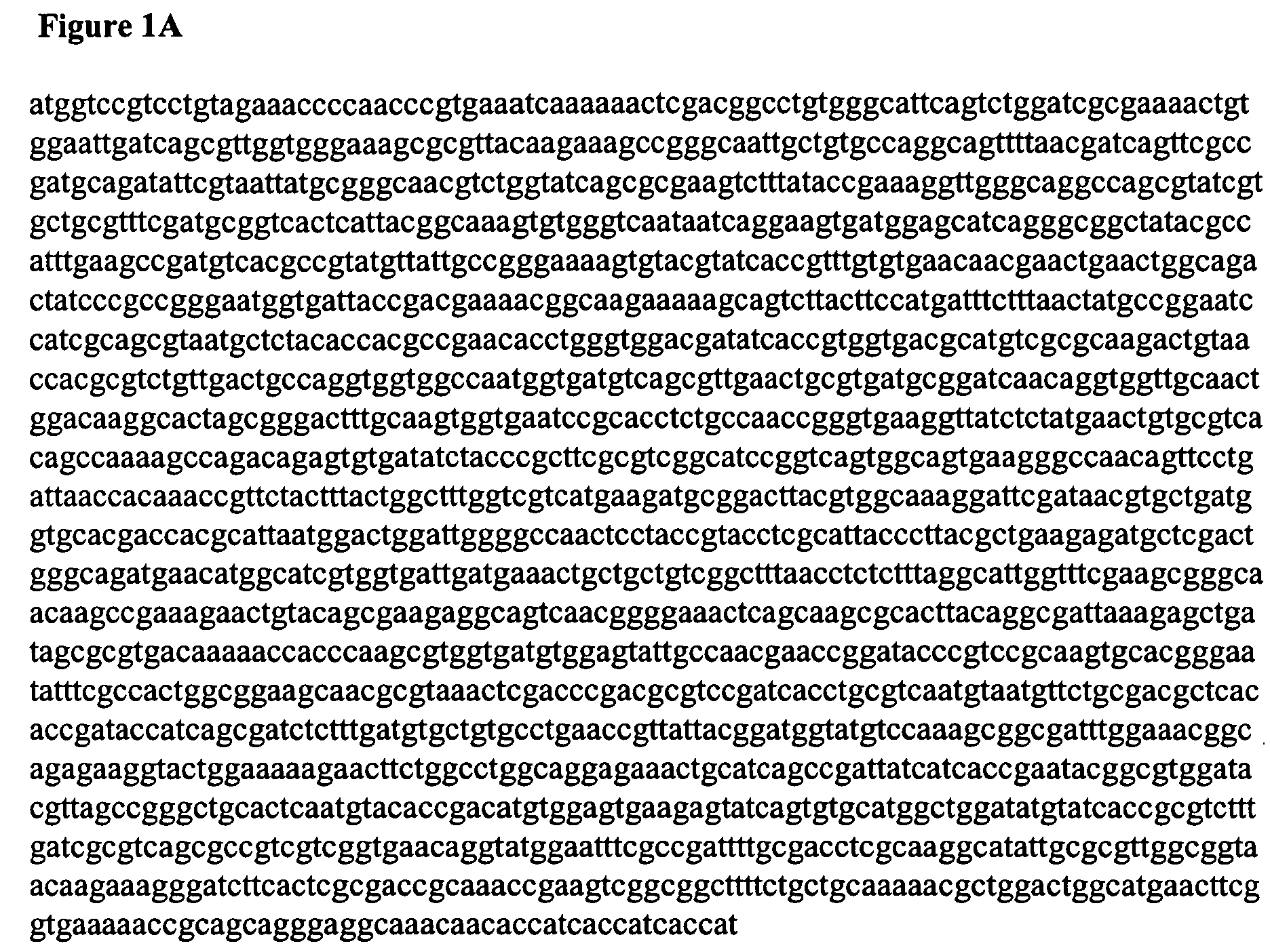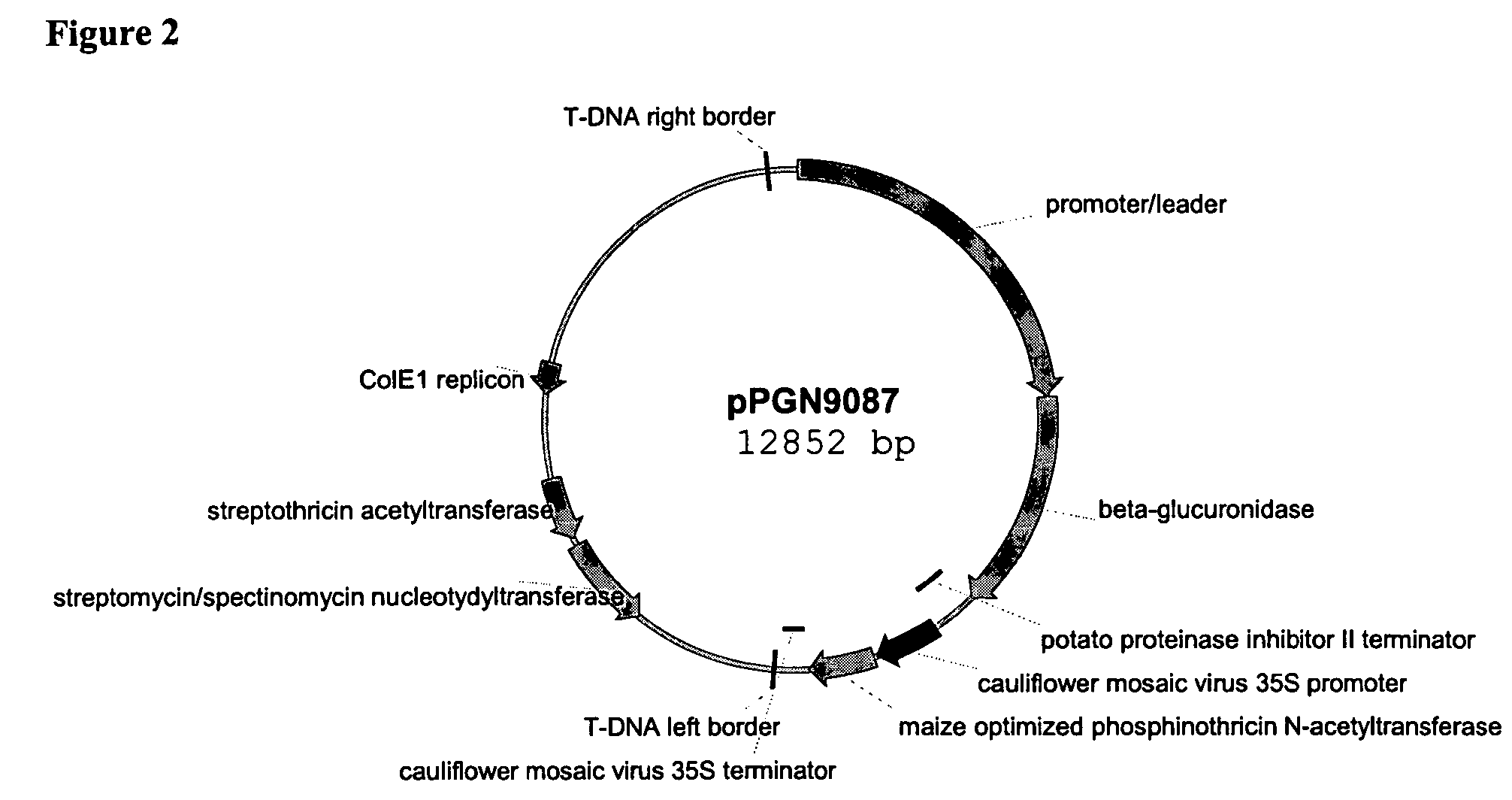Embryo preferred promoter and method of using same
a promoter and embryo technology, applied in the field of embryo preferred promoter and method of using same, can solve the problems of low or no activity in other tissues, affecting the health and yield of plants, and compromising plant health,
- Summary
- Abstract
- Description
- Claims
- Application Information
AI Technical Summary
Benefits of technology
Problems solved by technology
Method used
Image
Examples
examples
[0058]The following is presented as illustrative of an embodiment of the invention and does not limit the scope of the invention as otherwise set forth.
Materials and Methods
Construction of cDNA Libraries Representative of Maize Embryo Tissues
[0059]Maize plants were grown from seed in moist soil under standard greenhouse conditions. Four lines of maize were grown, representative Lancaster, Stiff Stalk, high protein and high oil lines. Elite inbreds are commonly derived from germplasm pools known as Stiff Stalk and Lancaster. Stiff Stalk inbreds have been known for decades and are reported by the USDA to have been widely available for decades. They are derived from the Iowa Stiff Stalk synthetic population (Sprague, 1946). For example see PI accession no. 550481 and discussions of Stiff Stalk germplasm at U.S. Pat. Nos. 5,706,603; 6,252,148; 6,245,975; 6,344,599 and 5,134,074. See also, Neuhausen (1989). Lancaster inbreds are derived from the open pollinated variety Lancaster Surecrop...
PUM
| Property | Measurement | Unit |
|---|---|---|
| temperature | aaaaa | aaaaa |
| temperature | aaaaa | aaaaa |
| pH | aaaaa | aaaaa |
Abstract
Description
Claims
Application Information
 Login to View More
Login to View More - R&D
- Intellectual Property
- Life Sciences
- Materials
- Tech Scout
- Unparalleled Data Quality
- Higher Quality Content
- 60% Fewer Hallucinations
Browse by: Latest US Patents, China's latest patents, Technical Efficacy Thesaurus, Application Domain, Technology Topic, Popular Technical Reports.
© 2025 PatSnap. All rights reserved.Legal|Privacy policy|Modern Slavery Act Transparency Statement|Sitemap|About US| Contact US: help@patsnap.com



